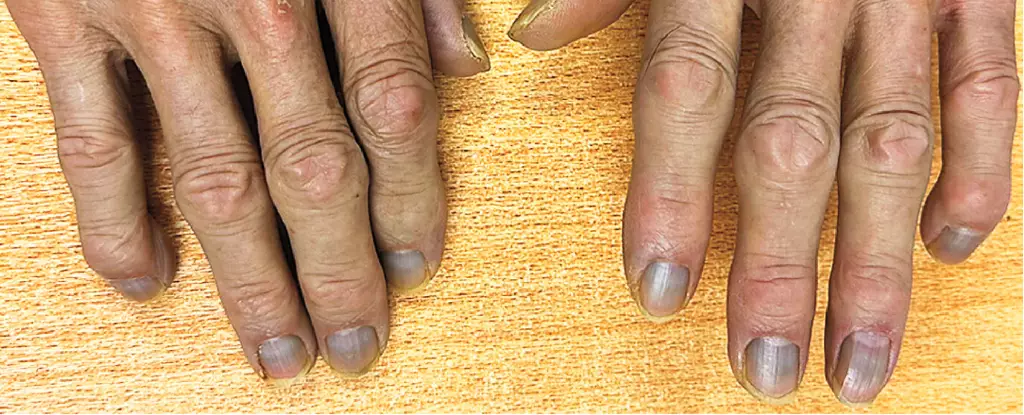In an intriguing case reported from a hospital in Hong Kong, healthcare professionals faced the unusual challenge of diagnosing a condition in an 84-year-old male patient who presented with urinary flow obstruction and had striking changes in skin pigmentation. This peculiar alteration was characterized by a grayish hue affecting not only his skin but also his eyes and nails. While the presenting symptom of urinary complications was routine, the underlying issue was convoluted, as the ashen discoloration had been observed for five years prior to his hospital visit.
After thorough investigation, medical tests hinted at the unusual presence of silver in blood samples, revealing concentrations that were excessively higher than normal levels. This unusual condition, known as argyria, results from an accumulation of silver in the body, and it manifests visually as a distinct discoloration of the skin. Despite being a rare occurrence, argyria’s presence is not entirely a medical novelty, particularly for those who have historically worked with metallic substances.
The roots of argyria can be traced back to industries involving silver, notably in crafts or mining, where artisans were regularly exposed to the element. However, the condition can also arise from the ingestion of medications enriched with silver ions, primarily intended for antimicrobial purposes. Despite the traditional use of colloidal silver, the medical community has consistently warned against its use, with the US Food and Drug Administration (FDA) emphasizing its lack of proven effectiveness and safety. This becomes crucial as individuals may unwittingly expose themselves to silver through unsolicited dietary supplements that falsely promise health benefits, often claiming to detoxify the body or bolster the immune system.
Throughout the years, the narrative around silver has maintained a controversial edge, particularly when one considers its historical status as a medicinal agent juxtaposed against modern medical standards that decry its use. As such, the nuances of this particular patient’s case highlight the complexities surrounding argyria and the variety of exposure routes, whether derived from occupation or over-the-counter remedies.
Even though the patient displayed a strikingly grayish complexion as a result of silver accumulation, the implications of argyria on his long-term health remain relatively benign. The most significant concerns primarily revolve around the potential interference with the absorption of certain medications, such as antibiotics and thyroxine. Importantly, patients with argyria often find themselves grappling with the cosmetic ramifications more so than severe health issues, which can feel frustrating given that effective treatments to reverse silver accumulation are currently nonexistent.
For this elderly gentleman, whose work history as a waiter did not provide a feasible source of silver exposure, determining the origin of the condition might pose a persistent challenge for his healthcare providers. Observations noted that his living environment appeared safe, devoid of any obvious silver contaminants, raising questions about incidental exposure or even chronic use of some unregulated supplements.
Despite the puzzling nature of the source of this patient’s silver exposure and the cosmetic deterioration it has led to, he can take solace in the fact that ongoing monitoring of his condition is feasible. His medical team, equipped with an understanding of argyria, can adequately observe any fluctuations in silver levels in future consultations. In the current landscape of medicine, where information is abundant yet often conflicting, this case serves as a primed opportunity for discussions about silver exposure, preventative healthcare, and the critical importance of adhering to scientifically validated treatments.
Ultimately, while argyria remains a largely rare and benign condition when monitored closely, it sheds light on the broader risks associated with self-treatment and the consumption of unverified supplements that abound within the wellness industry today. For both clinicians and patients, this case underscores the significance of vigilance in health practices, ensuring that treatment choices are firmly rooted in evidence-based medicine.


Leave a Reply